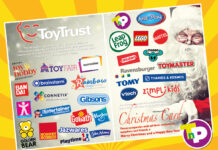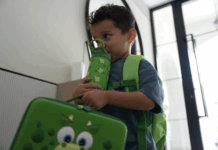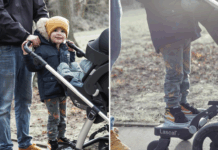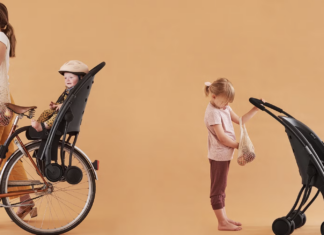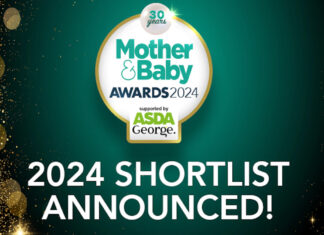FanFinders’ Chief Commercial Officer Adam Gillett discusses how modern families and the industry are embracing smart tech.
A few years ago, The Wall Street Journal asked in an article: “Are you a bad parent if you rely on parenting technology?” No, was the consensus, you’re a typical parent.
So, it comes as no surprise that when considering which product development and innovation trends are gathering real momentum, that connectivity, AI and remote monitoring are all sitting front and centre.
Sure, safety and sustainability are ever present in parents’ thoughts and the coming years will not change that, but the biggest trends in our industry can be found in everything from smart nappies through to wireless in-bra breast pumps all controlled via apps.
We’re talking real Internet Of Things (IoT)-type innovation here.
This market has been building in sophistication, use of data and shedding its original clinical, clunky looks for a while now, while the demand for products that can free up time and reduce the anxiety from day-to-day parenting has been growing year on year.
Increasingly, modern mums and dads that have grown up surrounded by a suite of digital devices and apps that make their lives easier, expect similar technologies to support them when starting a family.
With a range of new apps and smart technologies available, market research back in 2018 by firm Frost & Sullivan found that 3 out of 4 mums were already using technology to conceive, carry a pregnancy and equip a crib for their children, as well as monitoring their child as they grow, measuring breastmilk and tracking fertility for future offspring plans.
The pandemic has arguably only exacerbated the desire for next-gen tech. Many parents are having to juggle work and home life, while being immersed in a society that is even more conscious of health. A FanFinders’ survey conducted during lockdown found that monitoring their baby’s health was the largest concern for 72% of mums in the UK and 79% of mums in the US.
With the latest generation of parents looking for smart solutions, baby monitoring has perhaps been the clearest example of the rapid change taking place. Sensors have become smaller and cheaper – they can be integrated to provide real-time monitoring of things like temperature, hydration, and respiration, whilst the quality of audio and video has rocketed.
What this means, according to research company Technavio, is that the smart connected baby monitor market is expected to see $119 million incremental growth between 2019 and 2023.
So why, after years where babytech was considered ‘niche’ and not necessarily worth the investment, are we seeing more innovative products hit the market?
The answer is that our industry has always been dictated by ever-evolving consumer demands. Modern families are ready and asking for this technology and when that happens, we have a platform for serious growth.
Safety-led innovation
There is no doubt that the impact of COVID-19 on live events and the revaluation of parental ‘wants’ during a lockdown world has led directly to innovation from brands and manufacturers.
With direct-to-consumer and e-commerce channels flourishing, the focus has been delivering high tech, useable, easily controllable safety-led products that give parents peace of mind.
Examples include Lumi by Pampers, which was developed with Verily, Google’s life sciences sister company. Lumi is a smart nappy that tells parents when their baby needs changing, and comes with a system that includes a WiFi – connected night vision video camera that also monitors room temperature and humidity.
Then there’s the Owlet Smart Sock Baby Monitor, which lets parents track their baby’s heart rate and blood oxygen level; the Cubo Ai Smart Baby Monitor, which uses Ai face detection technology to alert you if it recognises that your baby’s mouth and nose are covered; and the Nanit Plus, a HD monitor that tracks sleep and breathing motion.
Also notable are the Snoo Smart Sleeper, a responsive baby cot, and Graco’s Sense2Snooze Bassinet (available in the US), which uses Cry Detection Technology to detect and automatically respond to baby’s cries to help soothe them back to sleep.
It’s clear that the long-term focus is on having an integrated group of devices that all speak to each other, and that can communicate with parents’ existing home tech systems – offering greater flexibility and efficiency.
Just the beginning
While exciting, this trend is not all plain sailing. Despite the ultimate intention of these products being to help parents relax, the question still remains whether being constantly connected (even via apps) could have the opposite effect and actually drive anxiety. Only further research will help to conclusively answer this.
Then there’s the data, which we know a thing or two about. These devices collect significant data related to families and newborns, and so how that data is processed and protected over the coming years will be an ongoing point of scrutiny.
Data laws are currently far more relaxed in the US than in the EU where we have GDPR and PECR to consider, the US is still in the early stages of changes to their data protection laws and the next few years will be pivotal for personal privacy.
What’s less uncertain is that the connected digital device and tracking trend is here to stay.
Babytech is set to play a vital role in new family dynamics over the coming years and as more medium-sized brands from the nursery sector look at developing products, it will not be long before the rest of our industry joins them.
FanFinders is the number one supplier of 1st party opt-in data in the UK baby market.
For more information on FanFinders and the consumer insight they can offer contact:
Tel: 0203 808 3011
Web: www.fanfinders.com



